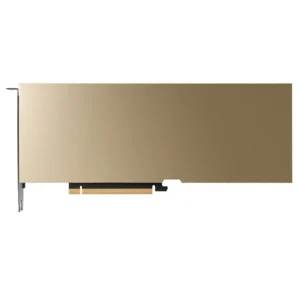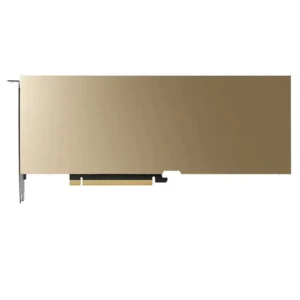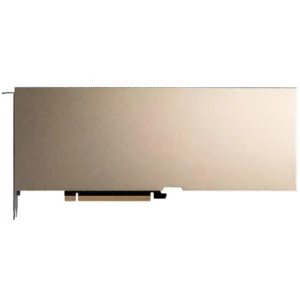The Intel X710 network adapter is a high-performance networking solution designed for modern data centers, enterprise networks, and high-demand computing environments. Whether you’re upgrading your server infrastructure, enhancing a high-performance workstation, or managing network-intensive tasks like virtualization and data analytics, the Intel X710 is engineered to meet the demands of cutting-edge applications. In this article, we’ll explore the key features, benefits, installation, and use cases of the Intel X710 network adapter.
Table of Contents
ToggleWhat Is the Intel X710 Network Adapter?
The Intel X710 is a 10Gb Ethernet network adapter that supports dual-port 10GbE connectivity through RJ45 and SFP+ ports. Designed for use in enterprise servers, workstations, and high-performance networking environments, the X710 provides scalable, high-bandwidth connectivity, making it an ideal choice for data-heavy applications such as virtualization, cloud computing, and high-frequency trading.
Intel’s X710 network adapter is available in several models, including versions with SFP+ (fiber) and RJ45 (copper) connections, providing flexibility in network configurations and deployment scenarios.
Key Features of the Intel X710 Network Adapter
1. Dual 10GbE Ports
The Intel X710 network adapter comes with two 10Gb Ethernet ports, providing users with the ability to create high-speed, low-latency network connections for demanding environments. The dual-port configuration allows for better network performance and redundancy, ensuring that users can achieve higher throughput and network reliability.
2. Supports Both Copper and Fiber Connectivity
One of the standout features of the Intel X710 is its support for both SFP+ (fiber) and RJ45 (copper) connections. This dual-mode capability gives users the flexibility to choose the best option for their infrastructure. RJ45 supports 10GBASE-T, while SFP+ supports fiber-optic cables, which are often used for longer-distance networking.
3. PCIe Gen 3.0 Support
The X710 uses the high-bandwidth PCIe Gen 3.0 x8 interface, offering improved data transfer speeds and bandwidth. This ensures that the adapter can handle high-volume network traffic without becoming a bottleneck. With PCIe 3.0 support, users can benefit from faster data throughput and more efficient resource utilization.
4. Intel Virtualization Technology
The Intel X710 is designed to work seamlessly in virtualized environments. Intel’s Virtualization Technology allows the network adapter to efficiently handle virtual machine traffic, reducing CPU overhead and improving the performance of virtualized workloads. This is particularly useful for environments running VMware, Microsoft Hyper-V, or KVM.
5. Advanced Error Correction and Diagnostics
Intel’s X710 includes advanced error correction features to ensure the integrity of transmitted data. It also includes diagnostic tools for detecting issues and troubleshooting network problems, making it easier for network administrators to manage and maintain the system.
6. Low Latency and High Performance
With its 10GbE connectivity, the Intel X710 delivers low-latency, high-performance network access, making it an excellent choice for applications that require fast, real-time communication, such as high-frequency trading, media streaming, and enterprise database systems.
7. Power Efficiency
Despite providing robust 10GbE connectivity, the Intel X710 is designed to be energy-efficient. The card implements advanced power-saving features, making it suitable for large-scale deployments without incurring significant additional power costs.
Benefits of the Intel X710 Network Adapter
1. Increased Network Speed and Efficiency
The 10Gb Ethernet speeds offered by the X710 allow businesses to accelerate their data transfer and enhance overall network efficiency. Whether you’re transferring large volumes of data, managing cloud applications, or running virtualized environments, the X710 can handle the demands of modern enterprise networking.
2. Improved Virtualization and Cloud Support
Virtualized environments often require high-speed, low-latency connections to prevent bottlenecks and maintain performance. The X710’s virtualization support ensures that virtualized workloads benefit from the high throughput and low latency, helping improve overall cloud computing performance.
3. Reduced Network Bottlenecks
The dual-port design allows for load balancing between the two 10GbE ports, which can significantly reduce network bottlenecks, particularly in large-scale deployments. Load balancing ensures that traffic is evenly distributed across both ports, improving overall network efficiency and performance.
4. Scalability for Growing Networks
As networks continue to scale and more devices and applications demand greater bandwidth, the Intel X710 network adapter ensures your infrastructure can keep up with growing demands. The ability to support 10Gb Ethernet on both fiber and copper makes it a versatile solution for a variety of network topologies.
5. Redundancy and Failover Protection
With dual-port functionality, the Intel X710 enables network redundancy, reducing the risk of downtime. In the event of a failure in one network port or cable, traffic can be automatically rerouted through the second port, ensuring continuous network connectivity.
Installing the Intel X710 Network Adapter
Installing the Intel X710 network adapter is relatively straightforward. Follow these steps for a smooth installation:
- Check Compatibility: Ensure that your system has an available PCIe x8 slot (or higher) to accommodate the X710.
- Power Down the System: Before installing, power off your computer or server, disconnect any cables, and open the case to access the motherboard.
- Insert the Adapter: Gently insert the Intel X710 card into the available PCIe x8 slot. Make sure the card is securely seated.
- Connect the Cables: If you are using RJ45 (copper) connections, plug in the appropriate Cat 6a or Cat 7 Ethernet cables. If you’re using SFP+ (fiber), insert the compatible fiber optic cables into the SFP+ ports.
- Install Drivers: After physically installing the card, download and install the latest drivers from Intel’s website to ensure optimal performance and compatibility with your operating system.
- Configure Network Settings: Finally, configure the network settings on your operating system to take advantage of the 10Gb connectivity.
Use Cases for the Intel X710 Network Adapter
The Intel X710 is suitable for a wide range of use cases that require high-speed networking, including:
- Data Centers: The X710 is perfect for high-performance servers in data centers, where low-latency, high-bandwidth connectivity is critical for managing large-scale applications.
- Cloud Computing: For cloud service providers and enterprises using cloud-based applications, the X710 enables fast data access and efficient network communication.
- Virtualization: Virtualized systems demand robust networking. The Intel X710 supports virtualized environments, ensuring that VMware, Microsoft Hyper-V, or KVM environments are optimized for speed and reliability.
- Gaming and Media Production: The X710 is also a great option for gaming servers or media production setups that require high-speed connectivity for video streaming or editing.
- High-Frequency Trading: For applications in finance that require the fastest possible network connections, the Intel X710 provides the low-latency and high throughput needed for high-frequency trading.
Conclusion
The Intel X710 network adapter is a high-performance solution designed for enterprise and data-intensive environments. Whether you’re building a new data center, upgrading your network infrastructure, or optimizing a virtualized system, the X710 provides the speed, reliability, and scalability needed to meet modern networking demands. With its support for 10GbE, dual ports, and advanced features like virtualization support and energy efficiency, the Intel X710 is a powerful tool that can help organizations handle the growing demands of data-heavy applications.





